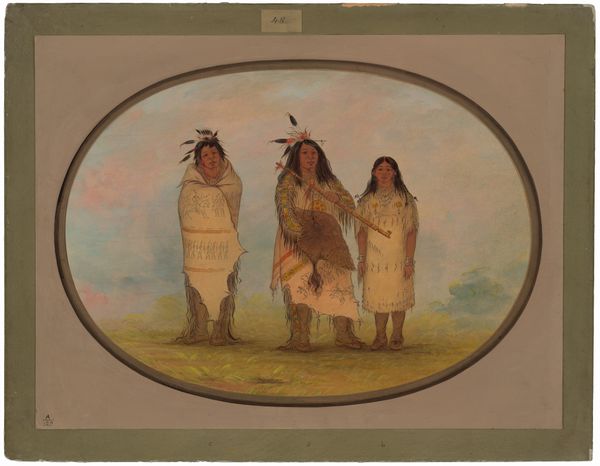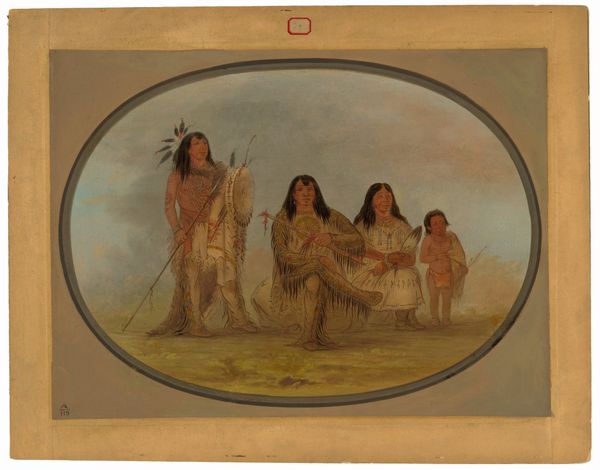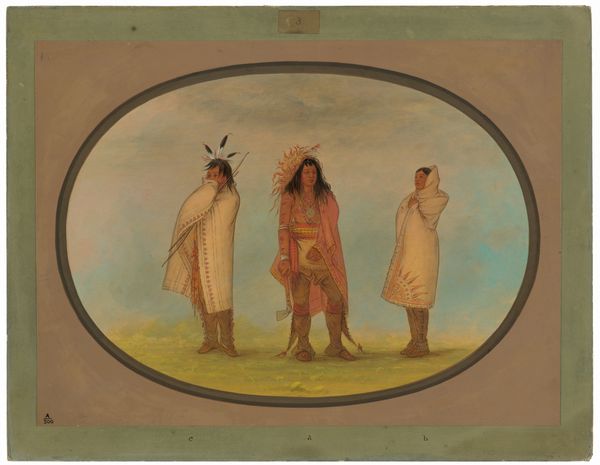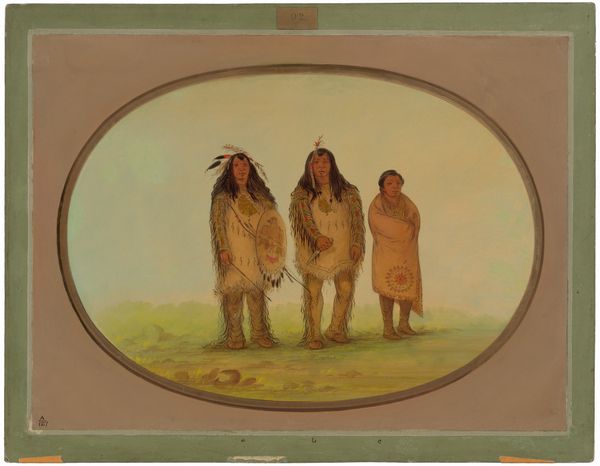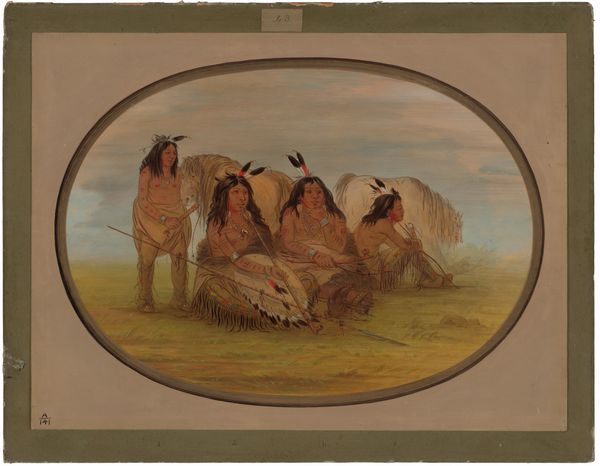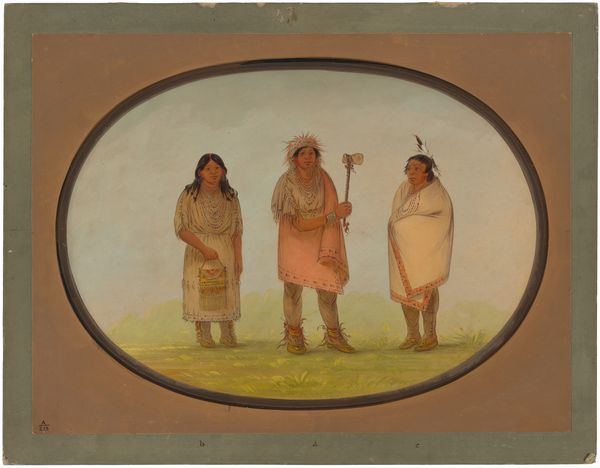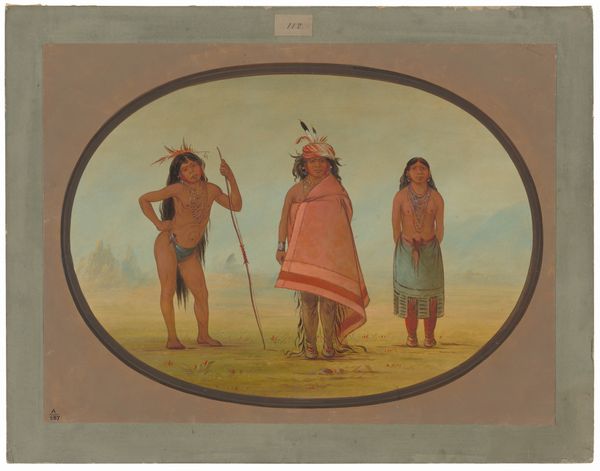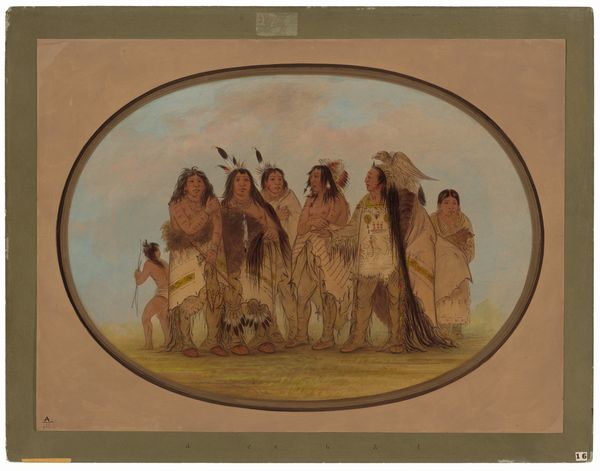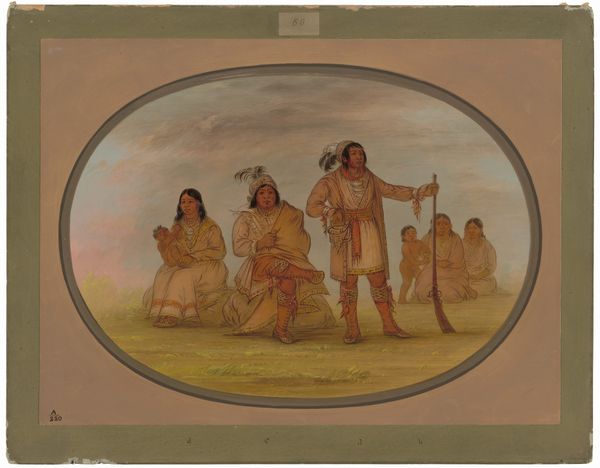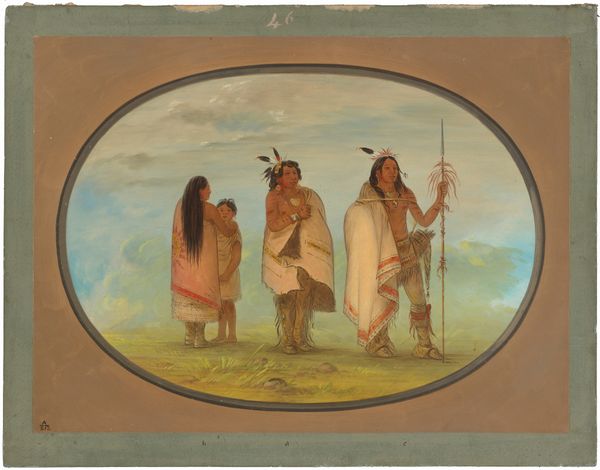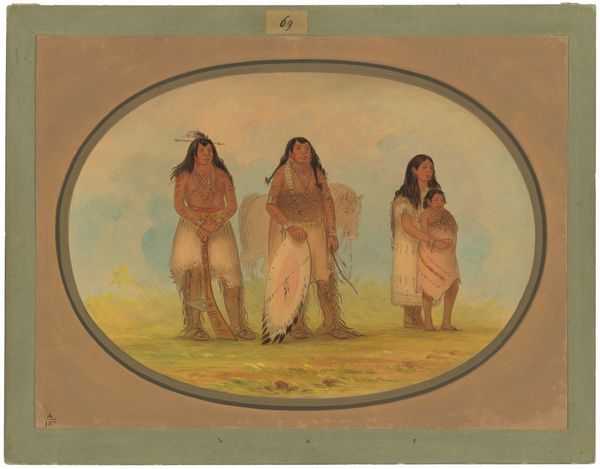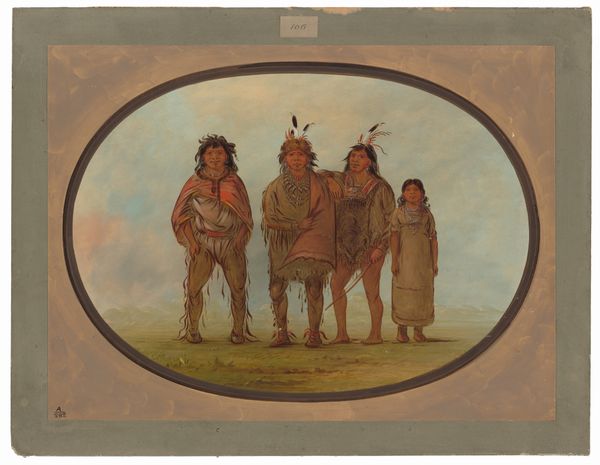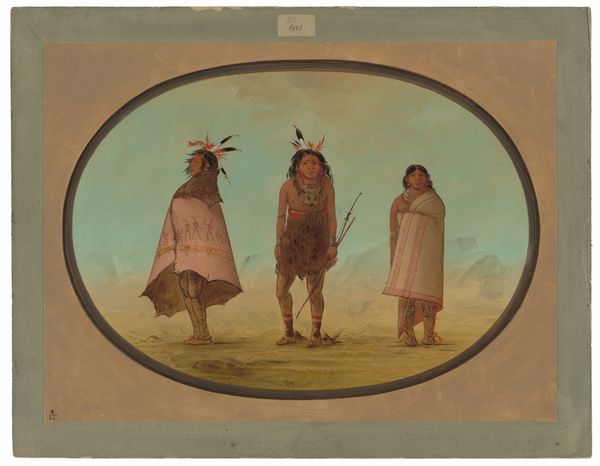
painting, gouache
#
portrait
#
water colours
#
painting
#
gouache
#
watercolour illustration
#
watercolor
Dimensions: overall: 47.3 x 63.5 cm (18 5/8 x 25 in.)
Copyright: National Gallery of Art: CC0 1.0
Curator: What we're looking at is a watercolor painting entitled "Assinneboine Warrior and His Family," created sometime between 1861 and 1869 by George Catlin. It’s a portrait, depicting the warrior alongside his family. Editor: My first impression is one of serene formality. The muted palette and oval frame lend it an almost antiquated feel, like a faded photograph. There's a careful arrangement of figures; it feels very posed, very constructed. Curator: Catlin made these paintings during his travels through the American West. He sought to document the appearance and customs of various Indigenous groups, amidst westward expansion. He believed Indigenous cultures were disappearing, so documenting it would preserve their memory. The paintings have come to represent Catlin's visual ethnography, influencing the image of the "noble savage". Editor: Noble savage, as constructed through a colonial lens, of course. What I find striking is the warrior's attire – the striking juxtaposition of what looks like a ceremonial cloak, feathered headdress alongside the natural material that forms the lower half of his garment. It speaks of a deliberate blend of cultural symbols and traditions that resists a homogenous reading of his identity. How does the gallery represent such an obviously loaded representation? Curator: It is vital to show how Indigenous people navigated settler colonialism in a way that represented and challenged stereotypes and the public’s historical perceptions, also allowing Catlin's works to have a complex perspective on historical sources of North American representation. Editor: The inclusion of the children also plays into that complexity. Note how the children appear unadorned, and in direct proximity to the women, who both face directly, as does the warrior. In relation, these observations bring so much weight to how power and inheritance get transmitted from one generation to the next within these gendered arrangements. Curator: Absolutely. His commitment to detailing specific regalia contributes greatly to our understanding of material culture of this specific Indigenous nation. The warrior is carefully positioned in the frame, holding symbolic status, even dominance. Editor: Yet, that formal stillness makes me a little uneasy. Considering the violent history of displacement and forced assimilation, there's an undercurrent of tension. Is this portrait an act of preservation, or appropriation? Is Catlin providing visibility, or further exploiting the very people he claims to admire? These contradictions have a social, political and racial importance in this context. Curator: I think it is both. This artwork is invaluable when studied through our changing historical awareness. Editor: It pushes us to critically reassess these figures who both documented and inevitably shaped the narrative. A discomforting beauty, I would say.
Comments
No comments
Be the first to comment and join the conversation on the ultimate creative platform.
